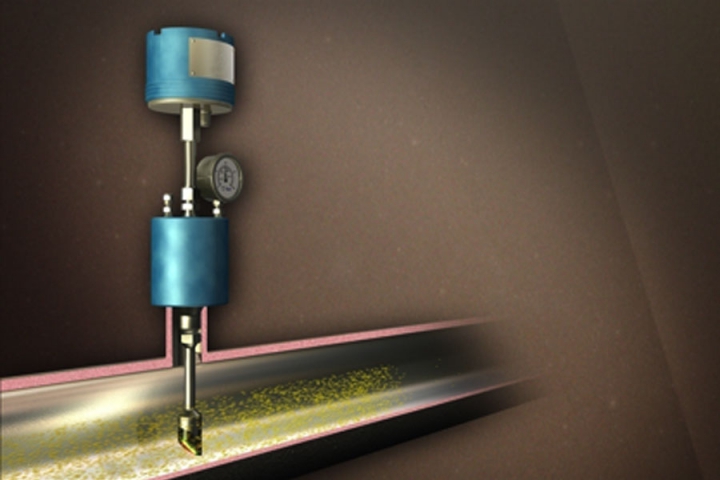SMS Team / December 16, 2016
When using erosion probes for sand monitoring you need to understand how they work. The measuring element erodes as sand particles impact on it.
You’re probably thinking this is a rather strange blog post to be reading from a company who are one of the major suppliers of erosion probes in the U.K. and, worse still, maybe a company you have bought erosion probes from in the past! Don’t worry, this is not some bizarre, Ratner-style attempt at corporate suicide – but rather an attempt to explain why what is actually a very effective technology often fails to meet the needs of its end users.
To understand why this is, it’s first necessary to understand how erosion probes work. The probe itself is simply a means of inserting a measuring element - a small metal strip - into the process flow. As sand particles entrained in the flow impact against this strip they cause it to erode; changing the cross-sectional area of the metal strip which can be measured as an increase in electrical resistance.
Unfortunately, resistance of the measuring element is also affected by the temperature of the process flow and this leads to the first reason why erosion probes don’t work:
1. Probe Response Vs. Temperature
To provide temperature compensation a second element is built into the body of the probe which is subject to the same temperature but not to the erosional effects of the sand entrained in the flow. However, there is a slight delay in the change in temperature between both elements and it is critical when the probe is being installed that this is taken into account, or else this can result in erroneous readings.
Now the sensing element will be subject to attack, not just from erosion but also from corrosion. To mitigate against this the sensing element is manufactured from a corrosion resistant alloy such as Duplex or Inconel. However, the majority of process pipework is manufactured from Carbon Steel which is not a corrosion resistant alloy, and as such there will be a mismatch in the results from the probe and any inspection results of the material degradation of the process pipework. This leads to second reason why erosion probes don’t work:
2. Erosion or Erosion-Corrosion?
When reviewing the data from the probe it must be clearly understood what is actually being measured as the combined effects of erosion-corrosion can often be significantly worse than that caused independently by erosion.
Next, to work effectively the probe needs to be positioned where erosion can be measured, i.e. it needs to be positioned at a place in the process flow where sand particles will impact on the sensing element. Now this may seem obvious, however, erosion probes are often installed at locations on the process pipework that are most convenient to the piping layout and not necessarily where the best measurement can be obtained. Secondly, process conditions and sand production profile will change over time and this leads to the third reason why erosion probes don’t work:
3. Probe Positioning
When installing a probe it is essential to review both the current and future production profile to determine not just a location but also the type and style of probe to be used that will provide the most accurate results.
At least two types of data output are available from an erosion probe: an erosion rate and a metal loss. Metal loss is the amount of metal that has been lost from the measuring element whereas erosion rate is the metal lost over a period of time. Although at first glance these look to be very similar they provide very different information and this leads to the fourth reason why erosion probes don’t work:
4. Erosion Rate or Metal Loss
Metal loss reflects the actual erosion to the probe element but viewed over a short period of time changes can look insignificant and as such need to be viewed over a long period of time to determine underlying trends. Whereas the erosion rate, on the other hand, can quickly flag up changes in the underlying metal loss. However, if the event is short lived this can often look much more severe than is actually the case.
By their very nature probes are consumable and sand will eventually erode the measuring element beyond a point where they can give reliable readings and they will require to be replaced. As the probe is intrusive into the flow they will either need to be replaced during a shutdown or by using specialist online retrieval tools, although this is becoming less and common and leads to the fifth reason why erosion probes don’t work:
5. Length of Service
To ensure continued and reliable readings from the probe it is essential that the rate of erosion is carefully monitored and that probes are scheduled to be replaced during a planned shutdown or other maintenance opportunity prior to failure of the element.



